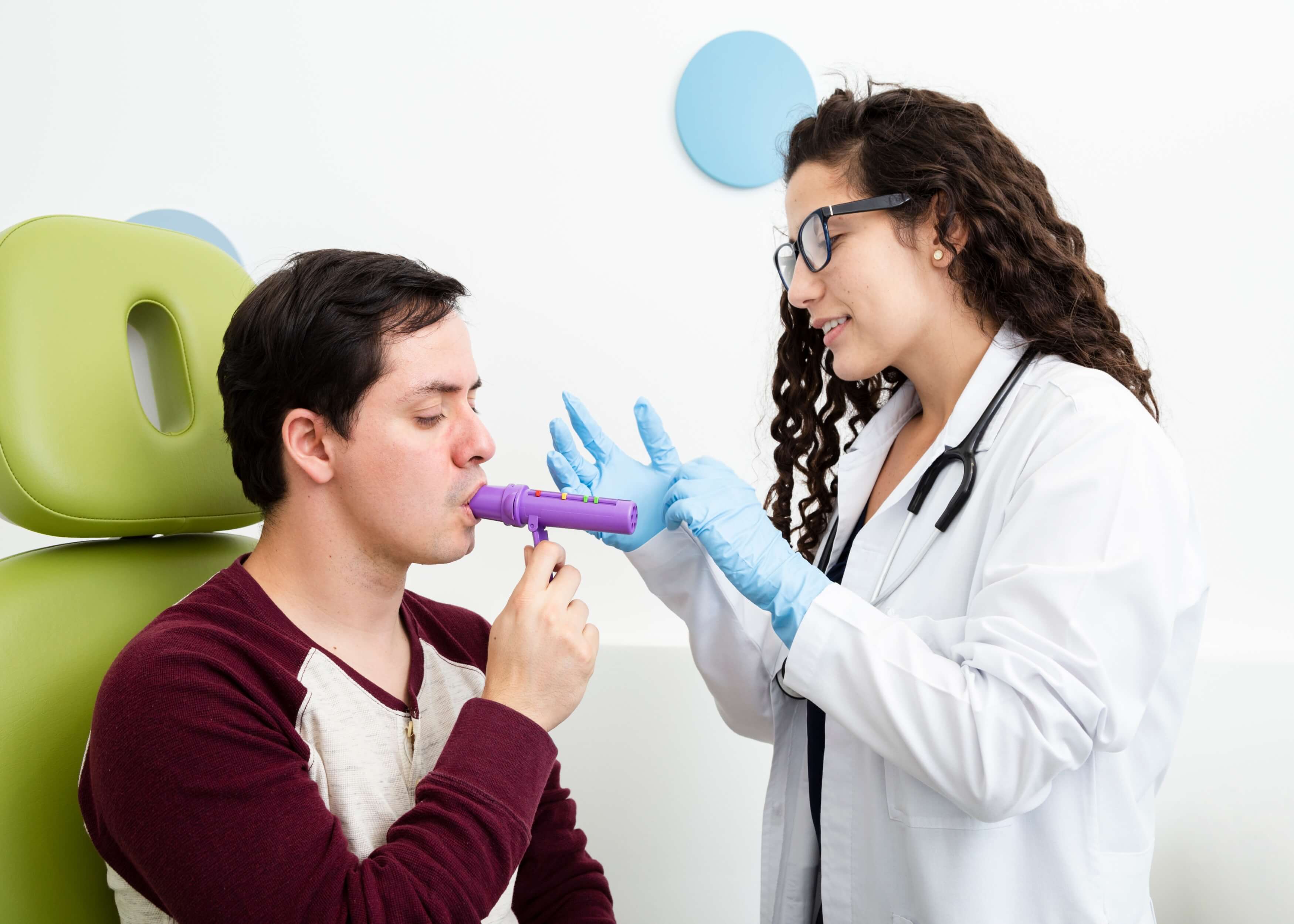DOCTOR INFORMATION
Measuring Peak Expiratory Flow Rate (OSCE)
What is peak flow?
🌬 A technique used to help diagnose or monitor asthma by establishing the speed with which you can blow air out of your lungs, to assess if your airways are narrowed.
🌬 Patients who have been previously diagnosed with asthma may be advised to regularly measure their peak flow, using a peak flow meter, for monitoring purposes.
Why measure PeFR?
🌬 It can indicate worsening of the patient’s condition
🌬 It can help to identify asthma triggers
🌬 The patient may realise they are having an asthma attack
🌬 You can check if the patients treatment plan is successful ✅
Introduction
- Greet the patient and introduce yourself
- Using patient friendly language, briefly explain the procedure
- Gain patient consent
- Comfortably position the patient and check they are not in any pain or having any breathing difficulties
- Wash hands ✋
PeFR Measurement
- Set the meter to zero
- Stand up or sit with your back straight
- Breathe in as deeply as possible
- Put your lips 👄 tightly around the mouthpiece of the peak flow meter, holding it horizontally
- Breathe out as powerfully as possible
- Make a note of the reading on the peak flow meter
- Repeat the previous steps two more times
- Take the highest of the three readings as your result
🌬 Now you should watch the patient performing the procedure alone, offering advice and feedback where necessary

Peak flow score
🌬 This is the measurement on the meter, given in litres of air exhaled per minute (l/min)
🌬 A ‘normal score’ depends on factors such as gender, age and height
🌬 For diagnosis, the patient’s score should be compared with the normal range for individuals in the same categories
🌬 For monitoring, the patient’s score should be compared to their ‘best’ score
Completion
- Ask the patient if they have any queries ❓ or would like anything explained again
- Ask the patient to measure their peak flow each morning and night 🌙 and keep a record of their results to enable better management of their asthma
- Thank the patient
- Wash hands ✋
Summary:
- Greet the patient and explain what you are going to do
- Measure the patient's peak flow
- Ask the patient to measure their own peak flow whilst you observe
- Compare the peak flow score to the normal range for individuals in the same category
- Ask the patient to measure their peak flow each morning and night and record it to manage their asthma more successfully













